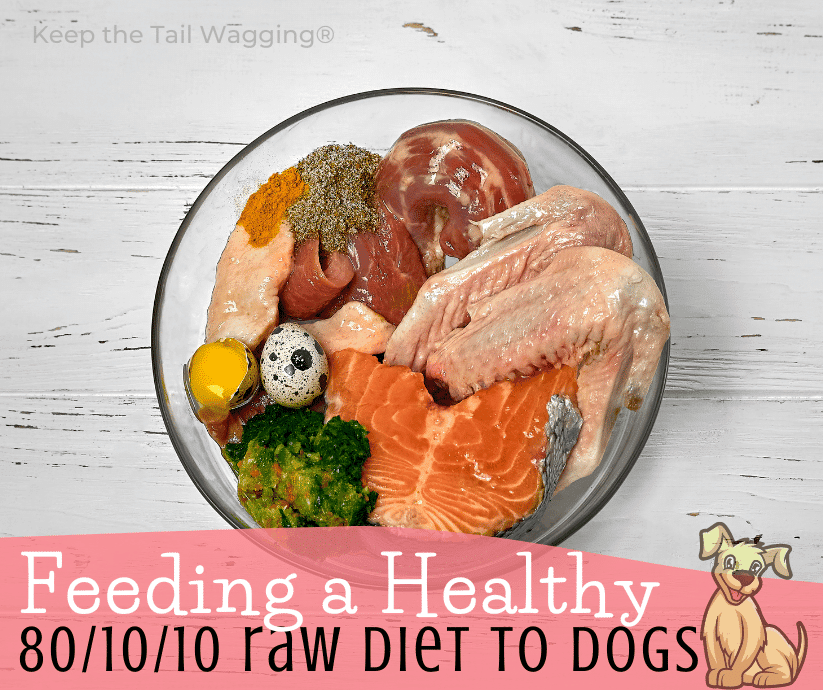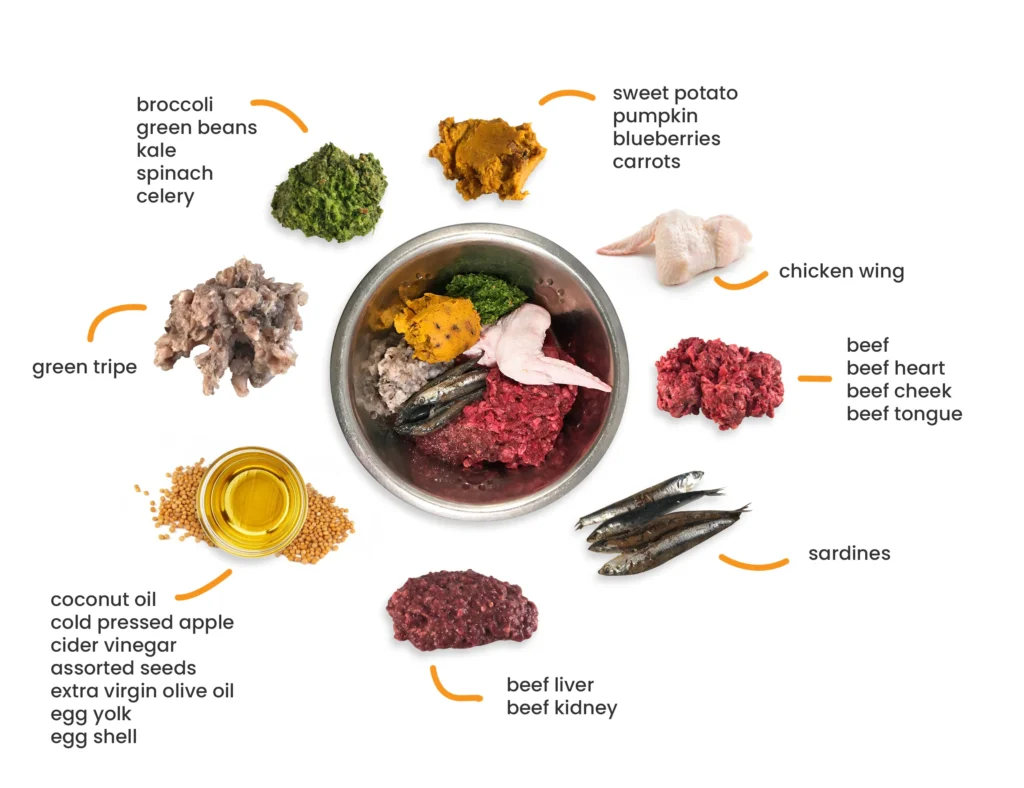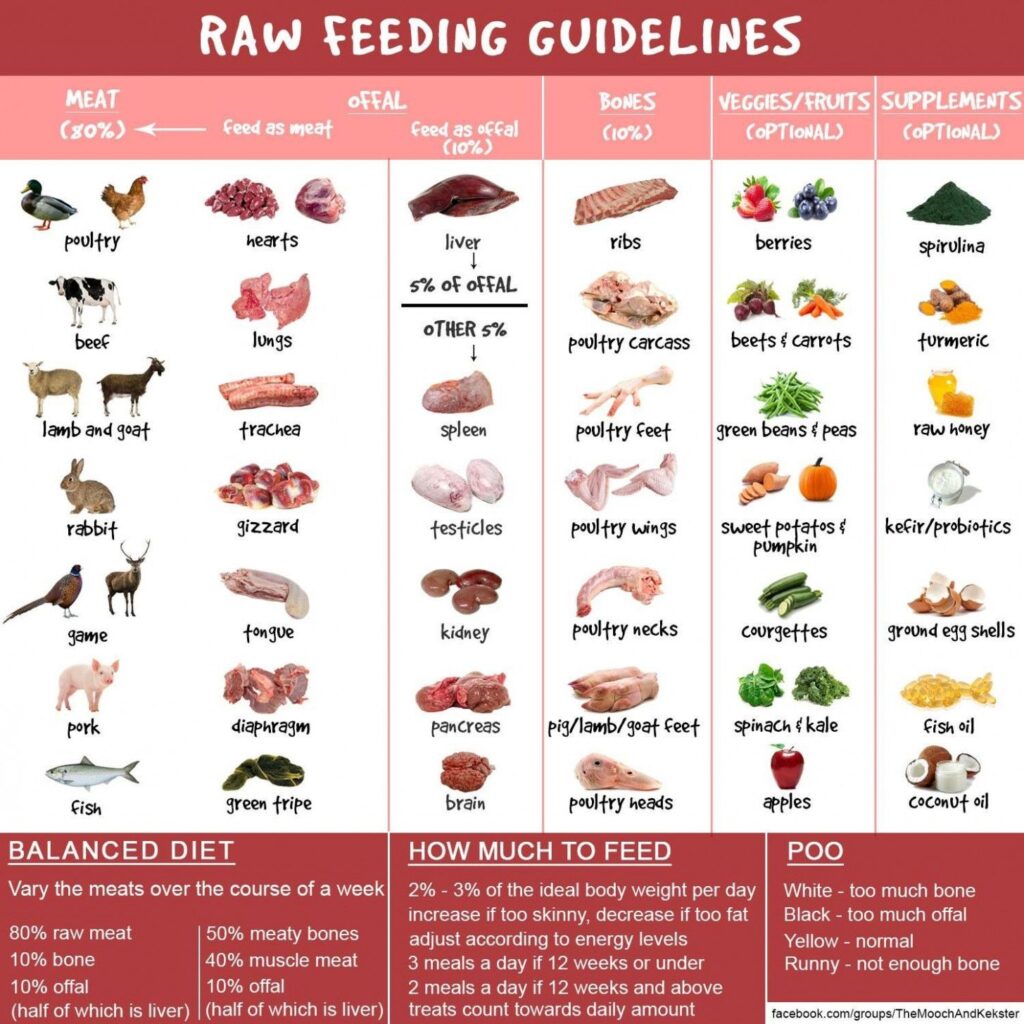When I first decided to switch my dog, Max, to a raw diet, I’ll admit—I was nervous. Handling raw meat? Balancing nutrients? Making sure it’s safe? It sounded intimidating. But after seeing Max struggle with dull fur, low energy, and an unpredictable stomach, I knew I had to try something different.

Fast forward a few months, and Max has never been healthier. His coat shines, his energy is through the roof, and his digestion has improved dramatically. A raw diet for dogs may sound complicated, but it’s easier than you think—and the benefits are worth every effort.
Here’s how to create a raw diet for your dog that’s both balanced and brimming with love.
1. What Exactly is a Raw Diet for Dogs?
A raw diet mimics what dogs’ wild ancestors ate: fresh, unprocessed ingredients packed with nutrients. The core components include:
- Muscle Meat: This is the bulk of the diet—think chicken breasts, beef chunks, or turkey thighs.
- Raw Bones: Not only do these provide calcium and minerals, but they’re also a natural toothbrush for your pup.
- Organs: Liver, kidney, and other organs are nutritional goldmines.
- Veggies and Fruits: These optional add-ins provide fiber, antioxidants, and a splash of variety.
- Supplements: Sometimes, a little extra fish oil or probiotics can help fill nutritional gaps.

The basic rule of thumb is:
- 70-80% muscle meat
- 10-15% raw, meaty bones
- 5-10% organs (liver is a must!)
- 5% veggies and fruits (if you choose to include them)
Think of it like crafting a gourmet meal—for your dog!
2. Know Your Dog’s Unique Needs
Every dog is different, and their raw diet should reflect that. When I started Max on raw, I had to factor in his Labrador appetite and endless energy. What works for a 10-pound Chihuahua won’t cut it for a 70-pound lab.

- Age Matters: Puppies need extra calcium for bone development, while senior dogs may benefit from leaner meats.
- Activity Level: Active dogs like Max burn through calories faster and need more protein, while less active dogs might need smaller portions.
- Health Considerations: If your dog has allergies, joint issues, or a sensitive stomach, you’ll need to tweak their diet accordingly.
Before diving in, talk to your vet to make sure you’re meeting your dog’s specific needs.
3. Choose High-Quality Ingredients
The quality of the ingredients is just as important as the balance. You wouldn’t feed your dog mystery meat (right?), so choose fresh, high-quality options.

- Meat: Look for human-grade chicken, beef, lamb, or turkey. Rotate proteins to keep things interesting and nutritionally varied.
- Bones: Raw bones are safe, but cooked bones can splinter—don’t take the risk.
- Organs: Liver is non-negotiable; it’s a nutrient powerhouse. Add kidney, spleen, or even lung for variety.
- Veggies and Fruits: Think carrots, green beans, blueberries, or apples (no seeds!). Skip onions, garlic, and grapes—they’re toxic to dogs.
Pro Tip: Stock up when meats go on sale and freeze portions to save time and money.
4. Craft the Perfect Meal Plan
When I first started feeding Max raw, I was worried about getting the portions right. After some trial and error (and a lot of tail wags), I found a system that worked.

Here’s a simple example for a 50-pound dog:
- Muscle Meat: 1 pound of ground turkey.
- Bones: 2 chicken wings or 1 turkey neck.
- Organs: 2 ounces of liver and 1 ounce of kidney.
- Veggies: A handful of pureed carrots or spinach.
Serve it fresh, and watch your dog’s tail wag with excitement!
5. Introduce the Diet Gradually
Switching to a raw diet too quickly can upset your dog’s stomach (trust me, I learned the hard way with Max).

- Start Slowly: Replace one meal a day with raw food, and gradually increase over a week.
- Monitor Reactions: Keep an eye on their stools (yes, it’s gross but important). Firm, well-formed stools mean you’re on the right track.
By taking it slow, you’ll make the transition smooth—for both you and your pup.
6. Safety First: Handling Raw Meat

Feeding raw isn’t just about your dog’s safety; it’s about yours too.
- Cleanliness is Key: Wash your hands, surfaces, and utensils thoroughly.
- Freeze First: Freezing meat for a few days kills most parasites.
- Thaw Safely: Always thaw meat in the fridge, not on the counter.
It might sound like a hassle, but once you get into the routine, it’s no different from prepping your own meals.
7. Watch for Results
The best part of switching Max to raw was watching the changes unfold:
- His coat became silky and shiny.
- He had more energy during playtime (and somehow, more energy after playtime).
- His stools became smaller and firmer—a sign of better digestion.
Seeing him thrive on this diet reassured me that all the effort was worth it.
8. Supplements: The Cherry on Top

Even the best raw diet might need a little boost:
- Fish Oil: Great for omega-3s and a shiny coat.
- Probiotics: Helps with digestion, especially during the transition phase.
- Calcium Powder: For dogs who don’t eat enough bones.
Your vet can recommend the best supplements based on your dog’s specific needs.
9. The Joy of Raw Feeding
Feeding Max a raw diet isn’t just about the physical benefits—it’s about the joy of knowing I’m giving him the best. Every meal feels like a small act of love, and seeing his excitement at dinnertime makes it all worthwhile.

Final Thoughts: Is a Raw Diet for Dogs Right for You?
A raw diet for dogs isn’t one-size-fits-all, but with a little effort, it can transform your dog’s health and happiness. Whether you’re looking to improve their coat, boost their energy, or simply give them the best nutrition possible, a raw diet is worth considering.

Start slow, focus on balance, and don’t be afraid to ask for help. Watching your dog thrive on fresh, wholesome food is one of the most rewarding experiences you’ll ever have as a pet parent.
Are you ready to give raw feeding a try? I’d love to hear about your journey or answer any questions you have—drop a comment below! 🐾


